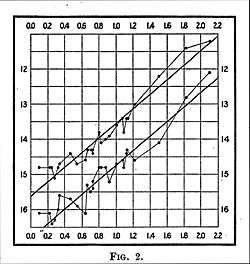Henrietta Swan Leavitt
Henrietta Swan Leavitt (/ˈlɛvɪt/; July 4, 1868 – December 12, 1921) was an American astronomer. A graduate of Radcliffe College, she worked at the Harvard College Observatory as a "computer", tasked with examining photographic plates in order to measure and catalog the brightness of stars. This work led her to discover the relation between the luminosity and the period of Cepheid variables. Leavitt's discovery provided astronomers with the first "standard candle" with which to measure the distance to faraway galaxies.[1][2] After her death, Edwin Hubble used Leavitt's period-luminosity relation, together with the galactic spectral shifts first measured by Vesto Slipher at Lowell Observatory, in order to establish that the universe is expanding (see Hubble's law). Before Levitt noticed the relation between luminosity and the period which can be used for distances up to 20 million light years, astronomers relied on parallax and triangulation. The method works up to hundreds of light years, but not further. Our galaxy, the milky way, is already 100'000 light years big. Even further distances can be measured by using the theoretical maximum mass of white dwarfs calculated by Subrahmanyan Chandrasekhar.[3][4]
Henrietta Swan Leavitt | |
|---|---|
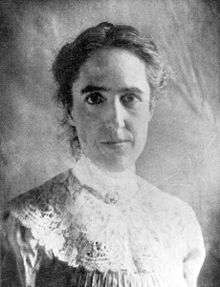 Henrietta Swan Leavitt | |
| Born | July 4, 1868 Lancaster, Massachusetts, U.S. |
| Died | December 12, 1921 (aged 53) Cambridge, Massachusetts, U.S. |
| Nationality | American |
| Citizenship | United States |
| Alma mater | Radcliffe College, Oberlin College |
| Known for | Leavitt's law: the period-luminosity relationship for Cepheid variables |
| Scientific career | |
| Fields | Astronomy |
| Institutions | Harvard University |
Biography
Early years and education
Henrietta Swan Leavitt was born in Lancaster, Massachusetts, the daughter of Congregational church minister George Roswell Leavitt[5] and his wife Henrietta Swan Kendrick. She was a descendant of Deacon John Leavitt, an English Puritan tailor, who settled in the Massachusetts Bay Colony in the early seventeenth century.[6] (In the early Massachusetts records the family name was spelled "Levett".) Leavitt remained deeply religious and faithful to her church.[7]
Leavitt attended Oberlin College before transferring to Harvard University's Society for the Collegiate Instruction of Women (later Radcliffe College), receiving a bachelor's degree in 1892.[8] At Oberlin and Harvard, Leavitt studied a broad curriculum that included classical Greek, fine arts, philosophy, analytic geometry, and calculus.[9] It wasn't until her fourth year of college that Leavitt took a course in astronomy, in which she earned an A–.[10]:27 Leavitt also began working as one of the women "computers" at the Harvard College Observatory, hired by its director Edward Charles Pickering to measure and catalog the brightness of stars as they appeared in the observatory's photographic plate collection. (In the early 1900s, women were not allowed to operate telescopes.)[11]
In 1893, Leavitt obtained credits toward a graduate degree in astronomy for her work at the Harvard College Observatory, but she never completed that degree.[12] In 1898 she became a member of the Harvard staff, as their first "Curator of Astronomical Photographs".[13] Leavitt left the observatory to make two trips to Europe and completed a stint as an art assistant at Beloit College in Wisconsin. At this time she contracted an illness that caused her increasingly to lose her hearing.[14][15]
Astronomical career
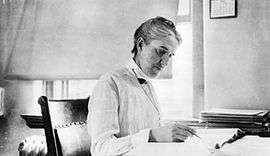
Leavitt returned to the Harvard College Observatory from her travels in 1903. Because Leavitt had independent means, Pickering initially did not have to pay her. Later, she received $0.30 an hour for her work,[10]:32 being paid only $10.50 per week. She was reportedly "hard-working, serious-minded …, little given to frivolous pursuits and selflessly devoted to her family, her church, and her career".[9] One of the women that Leavitt worked with in the Harvard Observatory was Annie Jump Cannon, who shared the experience of being deaf.[16]
Pickering assigned Leavitt to the study of variable stars of the Small and Large Magellanic Clouds, as recorded on photographic plates taken with the Bruce Astrograph of the Boyden Station of the Harvard Observatory in Arequipa, Peru. She identified 1777 variable stars. In 1908 she published her results in the Annals of the Astronomical Observatory of Harvard College, noting that the brighter variables had the longer period.[1]
In another paper published in 1912, Leavitt looked carefully at the relation between the periods and the brightness of a sample of 25 of the Cepheids variables in the Small Magellanic Cloud. This paper was communicated and signed by Edward Pickering, but the first sentence indicates that it was "prepared by Miss Leavitt".[2] Leavitt made a graph of magnitude versus logarithm of period and determined that, in her own words,
A straight line can be readily drawn among each of the two series of points corresponding to maxima and minima, thus showing that there is a simple relation between the brightness of the Cepheid variables and their periods.[2]
She then used the simplifying assumption that all of the Cepheids within the Small Magellanic Cloud were at approximately the same distance, so that their intrinsic brightness could be deduced from their apparent brightness as registered in the photographic plates, up to a scale factor since the distance to the Magellanic Clouds were as yet unknown. She expressed the hope that parallaxes to some Cepheids would be measured, which soon happened,[18] thereby allowing her period-luminosity scale to be calibrated.[2] This reasoning allowed Leavitt to establish that the logarithm of the period is linearly related to the logarithm of the star's average intrinsic optical luminosity (which is the amount of power radiated by the star in the visible spectrum).[19]
Leavitt also developed, and continued to refine, the Harvard Standard for photographic measurements, a logarithmic scale that orders stars by brightness over 17 magnitudes. She initially analyzed 299 plates from 13 telescopes to construct her scale, which was accepted by the International Committee of Photographic Magnitudes in 1913.[20]
In 1913, Leavitt discovered T Pyxidis, a recurrent nova in Pyxis, and one of the most frequent recurrent novae in the sky with eruptions observed in 1890, 1902, 1920, 1944, 1967, and 2011.[21]
Leavitt was a member of Phi Beta Kappa, the American Association of University Women, the American Astronomical and Astrophysical Society, the American Association for the Advancement of Science, and an honorary member of the American Association of Variable Star Observers. In 1921, when Harlow Shapley took over as director of the observatory, Leavitt was made head of stellar photometry. By the end of that year she had succumbed to cancer and was buried in the Leavitt family plot at Cambridge Cemetery in Cambridge, Massachusetts.[10]:89
Scientific impact
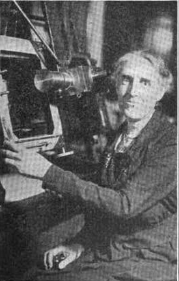
According to science writer Jeremy Bernstein, "variable stars had been of interest for years, but when she was studying those plates, I doubt Pickering thought she would make a significant discovery—one that would eventually change astronomy."[22] The period–luminosity relationship for Cepheids, now known as "Leavitt's law" made the stars the first "standard candle" in astronomy, allowing scientists to compute the distances to galaxies too remote for stellar parallax observations to be useful. One year after Leavitt reported her results, Ejnar Hertzsprung determined the distance of several Cepheids in the Milky Way and that, with this calibration, the distance to any Cepheid could be accurately determined.[18]
Cepheids were soon detected in other galaxies, such as Andromeda (notably by Edwin Hubble in 1923–24), and they became an important part of the evidence that "spiral nebulae" are independent galaxies located far outside of our own Milky Way. Thus, Leavitt's discovery would forever change our picture of the universe, as it prompted Harlow Shapley to move our Sun from the center of the galaxy in the "Great Debate" and Edwin Hubble to move our galaxy from the center of the universe.
Leavitt's discovery of a way to accurately measure distances on an inter-galactic scale, paved the way for modern astronomy's understanding of the structure and scale of the universe.[9] The accomplishments of Edwin Hubble, the American astronomer who established that the universe is expanding, also were made possible by Leavitt's groundbreaking research. Hubble often said that Leavitt deserved the Nobel Prize for her work.[23] Mathematician Gösta Mittag-Leffler, a member of the Swedish Academy of Sciences, tried to nominate her for that prize in 1925, only to learn that she had died of cancer three years earlier.[8][10]:118 (The Nobel Prize is not awarded posthumously.)
Illness and death
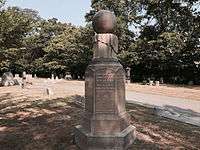
Leavitt's scientific work at Harvard was frequently interrupted by illness and family obligations. Her early death, at the age of 53 from stomach cancer,[24] was seen as a tragedy by her colleagues for reasons that went beyond her scientific achievements. Her colleague Solon I. Bailey wrote in her obituary that "she had the happy, joyful, faculty of appreciating all that was worthy and lovable in others, and was possessed of a nature so full of sunshine that, to her, all of life became beautiful and full of meaning."[10]:28
"Sitting at the top of a gentle hill," writes George Johnson in his biography of Leavitt, "the spot is marked by a tall hexagonal monument, on top of which sits a globe cradled on a draped marble pedestal. Her uncle Erasmus Darwin Leavitt and his family also are buried there, along with other Leavitts. ..." A plaque memorializing Henrietta and her two siblings, Mira and Roswell, is mounted on one side of the monument. Nearby are the graves of Henry and William James.[10]:90 There is no epitaph at the gravesite memorializing Henrietta Leavitt's achievements in astronomy.[25]
Posthumous honors
Books and plays
Lauren Gunderson wrote a play, Silent Sky, which followed Leavitt's journey from her acceptance at Harvard to her death.[29]
George Johnson wrote a biography, Miss Leavitt's Stars, which showcases the triumphs of women's progress in science through the story of Leavitt.[30]
Robert Burleigh wrote the biography Look Up!: Henrietta Leavitt, Pioneering Woman Astronomer for a younger audience. It is written for four to eight year olds.[31]
See also
- List of female scientists
- List of deaf people
- Women in science
- Timeline of women in science
- Human computer
- Astronomy
- Cepheids
References
- Leavitt, Henrietta S. (1908). "1777 variables in the Magellanic Clouds". Annals of Harvard College Observatory. 60: 87–108. Bibcode:1908AnHar..60...87L.
- Leavitt, Henrietta S.; Pickering, Edward C. (March 1912). "Periods of 25 Variable Stars in the Small Magellanic Cloud". Harvard College Observatory Circular. 173: 1–3. Bibcode:1912HarCi.173....1L.
- Expandierende Raumzeit und Dunkle Energie, de:Josef M. Gaßner, about Henrietta Levitt, 2016-03-15.
- Expandierende Raumzeit und Dunkle Energie, de:Josef M. Gaßner, about Subrahmanyan Chandrasekhar, 2016-03-15.
- Lamb, Gregory M. (July 5, 2005). "Before computers, there were these humans..." Christian Science Monitor. Retrieved January 1, 2020.
- Byers, Nina, ed. (2006). Out of the Shadows: Contributions of Twentieth-century Women to Physics (Reprint ed.). Cambridge University Press. p. 62. ISBN 978-0-521-82197-1.
- Alan Lightman (October 22, 2010). The Discoveries: Great Breakthroughs in 20th-Century Science. Knopf Canada. pp. 175–. ISBN 978-0-307-36986-4.
- Singh, Simon (2005). Big Bang: The Origin of the Universe. Harper Perennial. Bibcode:2004biba.book.....S. ISBN 978-0-00-715252-0.
- "1912: Henrietta Leavitt Discovers the Distance Key." Everyday Cosmology. N.p., n.d. Web. 20 Oct. 2014. "1912: Henrietta Leavitt Discovers the Distance Key". Everyday Cosmology. Retrieved January 1, 2020.
- Johnson, George (2005). Miss Leavitt's Stars: The Untold Story of the Woman Who Discovered How To Measure the Universe (1st ed.). New York: Norton. ISBN 978-0-393-05128-5.
- Gross, Liza. "Super Novas: Looking at the Sky Through a Glass Ceiling: Women in Astronomy". Origins: Hubble Telescope: A View To The Edge Of Space. Exploratorium. Retrieved January 1, 2020.
- Kidwell, Peggy Aldrich (2000). "Leavitt, Henrietta Swan". American National Biography Online. Oxford University Press. doi:10.1093/anb/9780198606697.article.1300973.
- Starr, Michelle (March 7, 2016). "The Harvard Computers who changed astronomy (pictures)". CNET. Retrieved January 1, 2020.
- Hockey, Thomas (2007). Biographical Encyclopedia of Astronomers. New York: Springer-Verlag. ISBN 978-0-387-35133-9.
- Hamblin, Jacob Darwin (2005). Science in the Early Twentieth Century. ABC-CLIO. pp. 181–184. ISBN 978-1-85109-665-7.
- Sobel, Dava (2016). The Glass Universe. Viking. p. 113. ISBN 9780698148697.
- Malatesta, Kerri (April 13, 2010). "Delta Cephei". American Association of Variable Star Observers. Retrieved January 1, 2020.
- Fernie, J.D. (December 1969). "The Period–Luminosity Relation: A Historical Review". Publications of the Astronomical Society of the Pacific. 81 (483): 707. Bibcode:1969PASP...81..707F. doi:10.1086/128847.
- Madore, Barry F.; Rigby, Jane; Freedman, Wendy L.; Persson, S. E.; Sturch, Laura; Mager, Violet (2009). "The Cepheid Period–Luminosity Relation (The Leavitt Law) at Mid-Infrared Wavelengths. III. Cepheids in NGC 6822". The Astrophysical Journal. 693 (1): 936–939. arXiv:0812.0186. Bibcode:2009ApJ...693..936M. doi:10.1088/0004-637X/693/1/936.
- "Henrietta Leavitt". SheIsAnAstronomer.org. Retrieved January 1, 2020.
- Leavitt, Henrietta S.; Pickering, Edward C. (May 1913). "25 New Variable Stars, Principally in Harvard Maps 39 and 45". Harvard College Observatory Circular. 179: 1–4. Bibcode:1913HarCi.179....1L.
- Bernstein, Jeremy (July 17, 2005). "Book review: George Johnson's Miss Leavitt's Stars". Los Angeles Times. Retrieved January 1, 2020.
- Ventrudo, Brian (November 19, 2009). "Mile Markers to the Galaxies". One-Minute Astronomer. Retrieved January 1, 2020.
- "Henrietta Swan Leavitt". Famous Scientists. Retrieved January 1, 2020.
- "Henrietta Swan Leavitt". FindAGrave.com. Retrieved January 1, 2020.
- Schmadel, Lutz (2003). Dictionary of Minor Planet Names, Volume 1. Springer Science & Business Media. p. 461. ISBN 9783540002383.
- "Moon Nomenclature". NASA. Archived from the original on February 23, 2013. Retrieved January 1, 2020.
- @superasassn (September 20, 2017). "Our new "Henrietta Leavitt" telescope now being deployed at @LCO_Global site @mcdonaldobs. HET big dome in the background. @MooreFound" (Tweet) – via Twitter.
- Jones, Kenneth (December 28, 2010). "Silent Sky, About a Female Astronomer's Discovery, Will Premiere at South Coast Rep". Retrieved January 1, 2020.
- "Measuring the Universe in 'Miss Leavitt's Stars'". NPR. July 10, 2015. Retrieved January 1, 2020.
- Burleigh, Robert (2013). Look Up!. ISBN 9781416958192.
Further reading
- Lang, Harry G. (1994). Silence of the Spheres. Westport, CT: Bergin & Garvey. ISBN 978-0-89789-368-8.
Sources
- Johnson, George (2005). Miss Leavitt's Stars: The Untold Story of the Woman Who Discovered How to Measure the Universe. New York: W.W. Norton & Company. ISBN 978-0-393-05128-5.
- Korneck, Helena (October 1982). "Frauen in der Astronomie". Sterne und Weltraum (in German). No. 10. pp. 412–414. ISSN 0039-1263.
- Lorenzen, Michael (1997). "Henrietta Swan Leavitt". In Shearer, Barbara; Shearer, Benjamin (eds.). Notable Women in the Physical Sciences: A Biographical Dictionary. Westport, CT: Greenwood Press. pp. 233–237. ISBN 0-313-29303-1.
External links
| Wikiquote has quotations related to: Henrietta Swan Leavitt |
| Wikimedia Commons has media related to Henrietta Swan Leavitt. |
- Women in Astronomy Bibliography from the Astronomical Society of the Pacific
- Periods of 25 Variable Stars in the Small Magellanic Cloud. Edward C. Pickering, March 3, 1912; credits Leavitt.
- Henrietta Swan Leavitt: a Star of the Brightest Magnitude ACS/Women Chemists Committee's biography with several links
- Henrietta Swan Leavitt, Tim Hunter (astronomer), The Grasslands Observatory
- Henrietta Swan Leavitt's genealogy
- Henrietta Swan Leavitt – Lady of Luminosity from the Woman Astronomer website
- O'Connor, John J.; Robertson, Edmund F., "Henrietta Swan Leavitt", MacTutor History of Mathematics archive, University of St Andrews.
